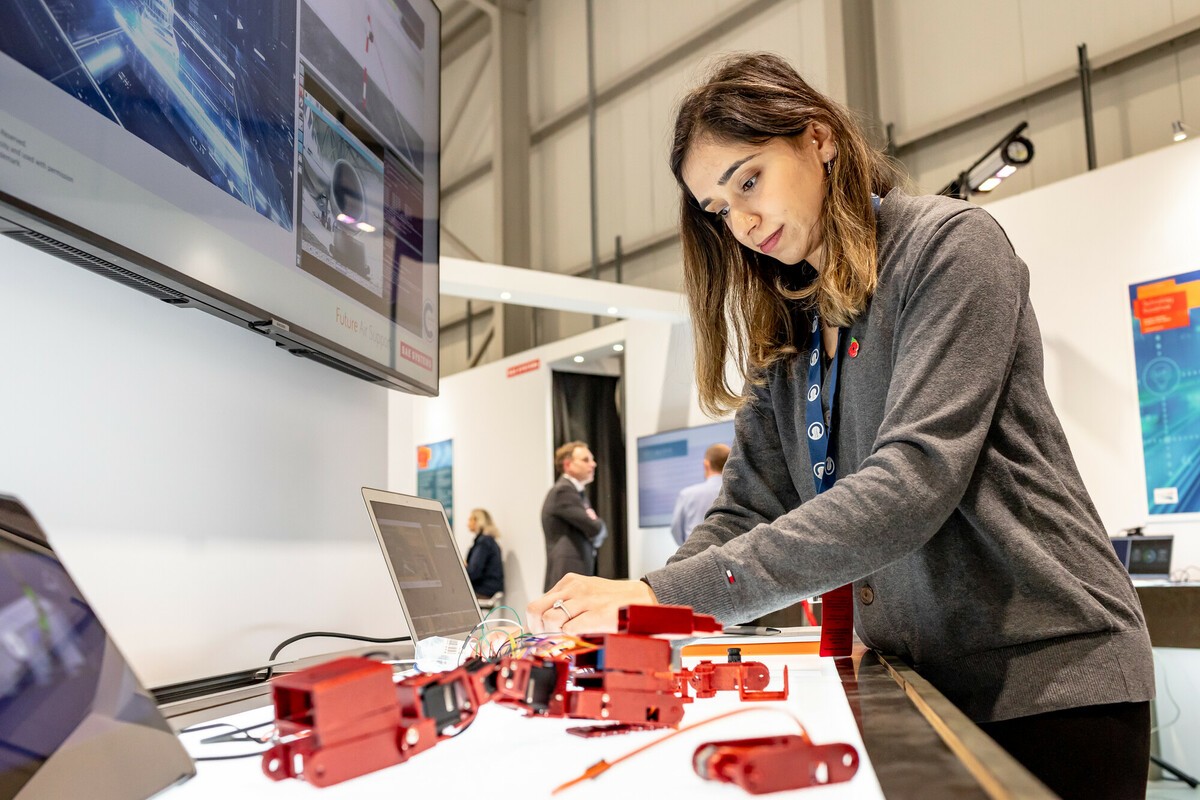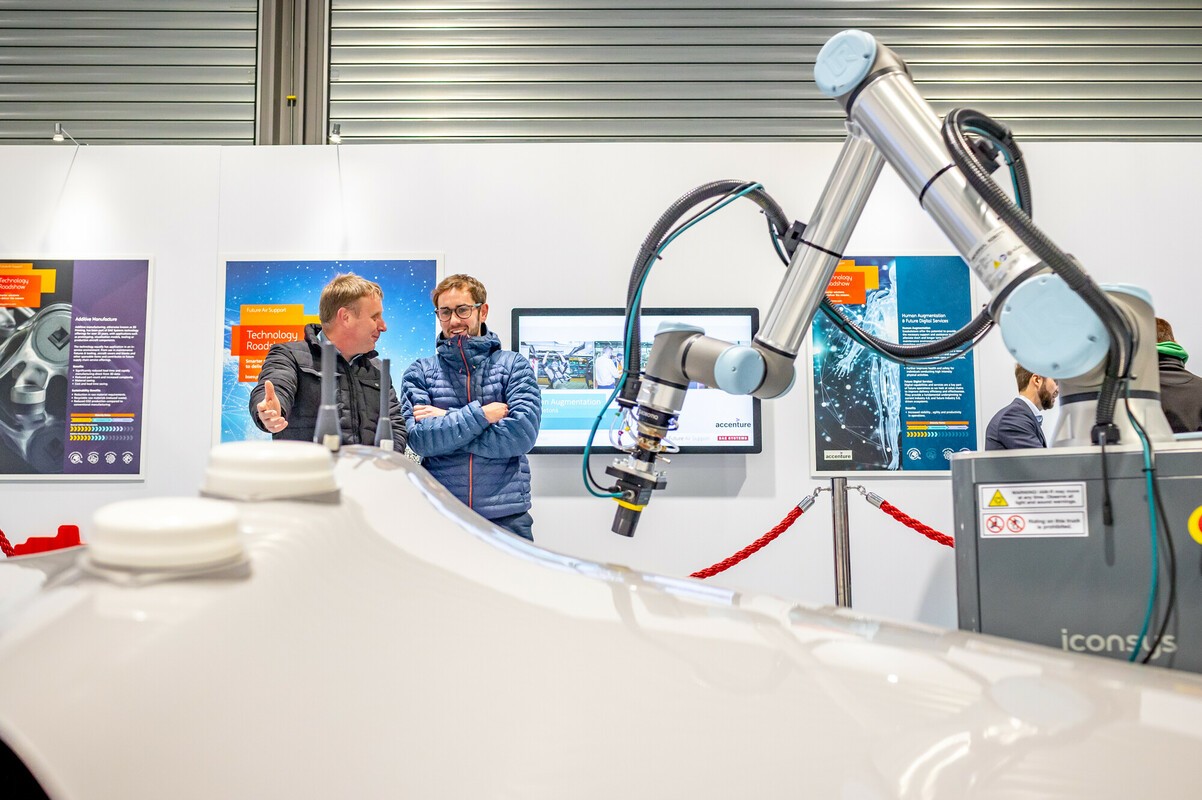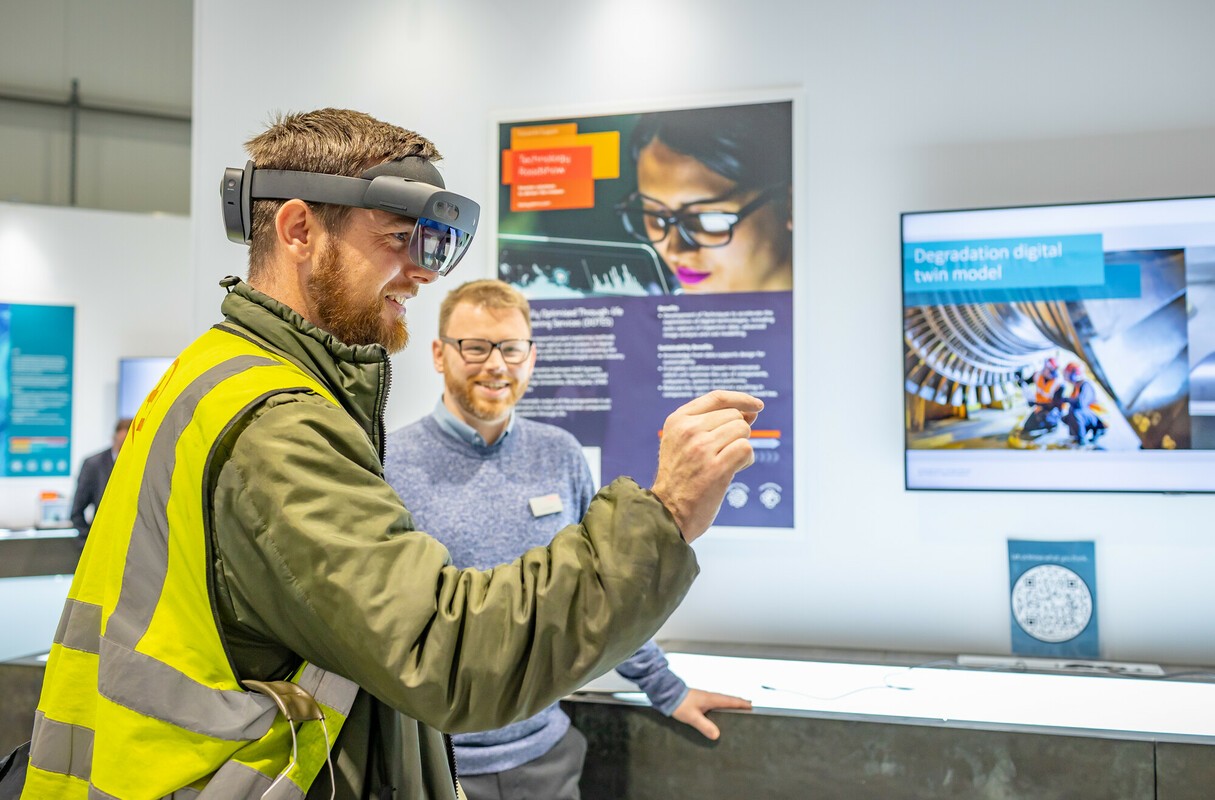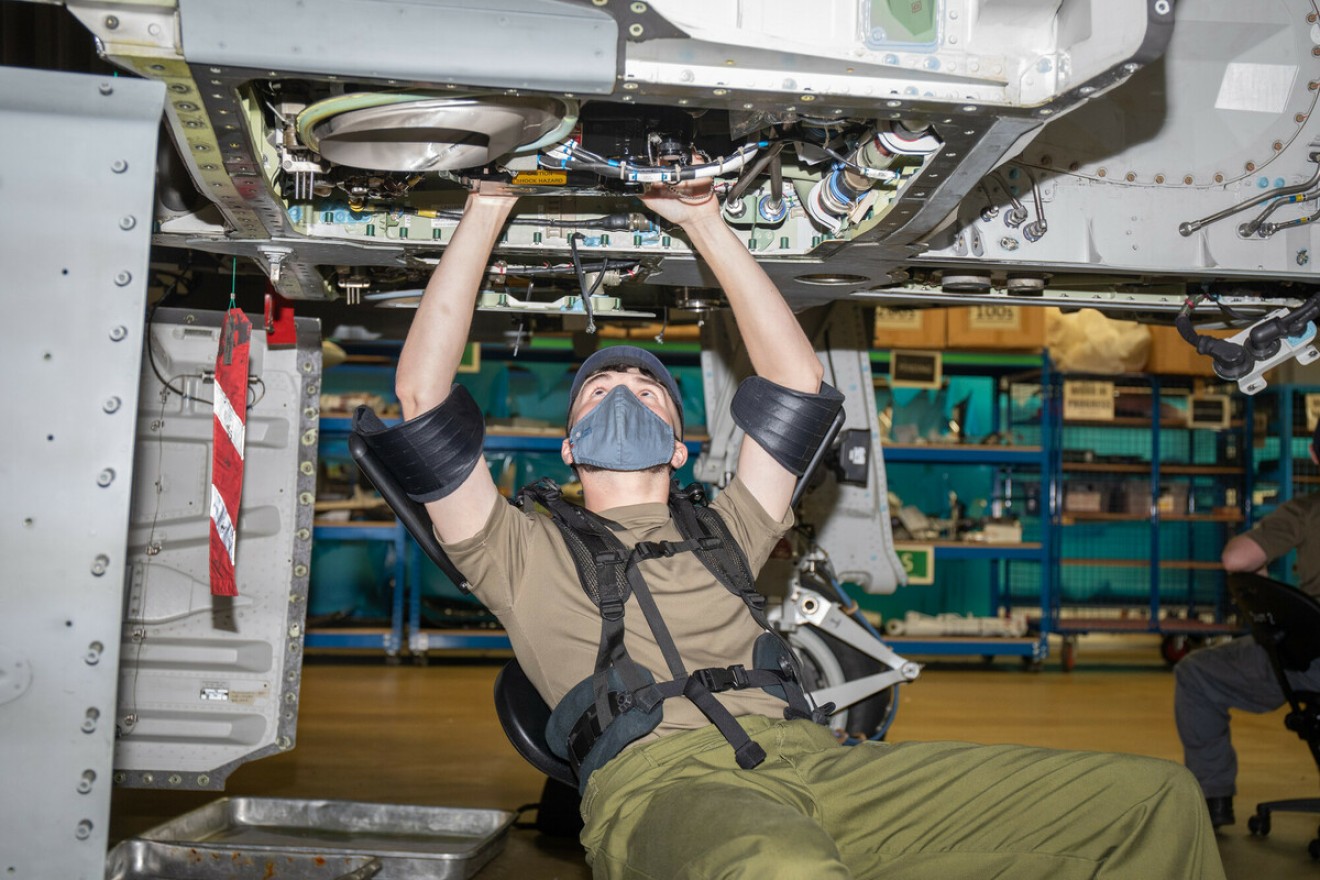
A guest at the roadshow checks out the tech
Today, there are a host of new ideas and technologies being explored and implemented by BAE Systems and the Royal Air Force. Several of these cutting edge innovations were recently showcased at an event at RAF Coningsby, home to five Eurofighter Typhoon squadrons.
Taken together, these different concepts created a fascinating vision of Future Air Support.
BAE Systems says it is currently working with various different partners to trial new technologies and solutions that will help when aircraft come into a hanger for maintenance tasks.
It wants to explore new ways of delivering leading-edge capabilities and value for money to the RAF. Another key driver for both BAE Systems and the RAF is reducing the environmental impact of their operations through the use of synthetic training and investment in electric products.
Easier, Faster And Simpler
Martin Topping, UK Typhoon Service Delivery Director at BAE Systems, says: “It’s all about bringing technologies into the workplace to make people’s lives easier, faster and simpler.
“Nobody is under any illusion that all the technology on show at the event was the finished article. But it was about bringing different parties together with their entrepreneurial and innovation juices flowing. And you could see that working in the enthusiasm of the people who came along.
“As service director the technology I get most excited about is the Big Data piece — using the data to inform and build predictive pictures around maintenance and availability.”
Chris Payne, BAE Systems’ Head of Future Capability for Maintenance, says the company is already well-established working alongside the RAF to provide support for the Typhoon squadrons.

A robot carries out an airframe inspection during the roadshow
“There are around 600 BAE Systems people on the base at RAF Coningsby. Now we are looking at technologies and support concepts that can help move our capability forward.
“Just as we have done a lot of work on bringing the right information at the right time to the pilot in the cockpit, we are taking this same approach into the support domain. We are saying to the maintainers, here’s the key information you need to do these specific tasks rather than giving them the whole manual.
“Ultimately, introducing these new technologies is about delivering marginal gains to increase the availability rate of the platform and reduce the downtime.

AR and VR headsets were demonstrated at the show
“We've set a number of goals around a continual improvement cycle. Effectively, we carry out a cost benefit analysis. If we can see that there's a benefit to be gained, we also look at the investment needed — because these technologies cost money to invest in, to develop, to get to a point of maturity.
“We look at the benefits of each programme on a case-by-case basis. In some cases, the benefit might be one or two per cent, in other cases it might be 10 per cent or more.”
“Even before introducing new technology we have been able to reduce the maintenance hours per flying hours by 30 per cent over the past decade or more. But there is still plenty to go at because Typhoon is going to be around for at least another 25 years.”
Chris also says there is another before, too. And that is that just as Typhoon is sometimes referred to as a flying test bed for the planned future combat air systems, some of the support concepts that are being trialled today, will be delivered into next generation fast jet domain.
Indeed, the trials at RAF Coningsby will form part of a wider strategy to drive efficiency through the introduction of technologies, to develop new partnerships through collaboration across academia and small and medium enterprises, and to contribute to UK jobs across the supply chain.
Group Captain Daniel Penter, Director of RAF ASTRA said: “The pace by which technology advances is increasing all the time and it’s imperative that we explore with industry how best to harness this to enhance how we support the frontline.”
Technology on Trial
Digital Inspections — component are even whole aircraft scans are set to become more commonplace, with optical projection technologies carrying out labour intensive inspections
Autonomous co-bots – these free-moving robots are able to work in tandem with the exoskeleton users assisting with training and maintenance tasks
Augmented Reality headsets – with increased computing powers and information, AR headsets are expected to become a vital tool. They’ll allow data to be visualised in new ways, offering maintainers hands-free access to technical publications and the capability to view a digital twin of the aircraft and its maintenance history
Sustainable operations – delivering advanced synthetic training to pilots and aircrew whilst maximising use of renewable resources to help the RAF meet its target of net zero by 2040
Exoskeletons – not quite turning humans into Ironman, but these suits and gloves do bestow ‘robotic’ powers and allow aircrew and maintenance teams to handle greater loads safely and avoid repetitive strains
